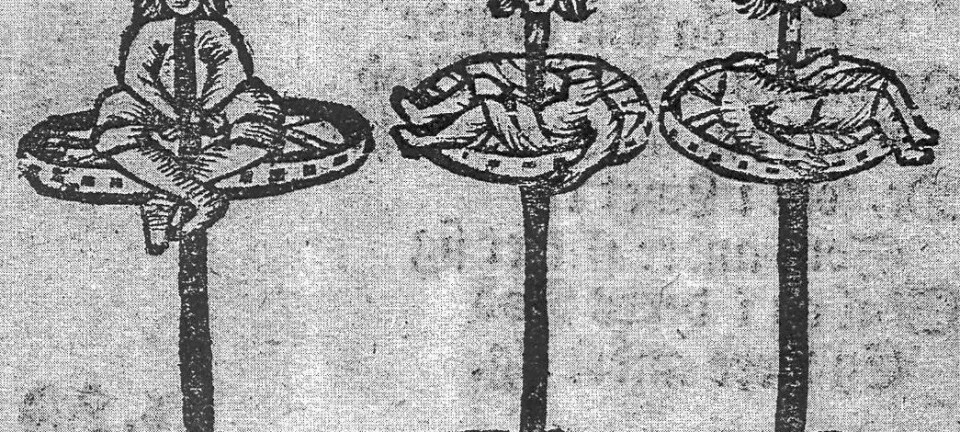
The Pope’s scientists study miracles
God’s representative on Earth has his own miracle commission. Its job is to determine – using scientific methods – whether unexplainable healings really are miracles caused by deceased people.
Since the 16th century, the Pope’s cardinals have been using a so-called miracle commission. This is a special task force consisting of medical scientists who investigate whether alleged saints can really cause miracles.
”There has been talk of the Vatican having a kind of ’CIA’, which investigates alleged miracles. This may be true to a certain extent,” says Niels Christian Hvidt, an associate professor of theology at the University of Southern Denmark, who is also the director of the Danish Center for Research in Faith and Health.
”The miracle commission canonises saints in the Catholic Church. It’s sent out to investigate whether or not a person qualifies as a saint. Since saints are a central element of Catholicism, they need to be examined using the latest scientific methods.”
Can science spot a miracle?
To determine whether it’s really a miracle, the commission collects evidence and examines the healed person. These assessments are made in accordance with scientific methodology.

”The miracle commission consists of doctors who use the latest equipment to find an explanation to why a person has been healed,” he says.
”If, for instance, a brain tumour suddenly disappears after prayer, the doctors check the patient’s medical record and brain scans from before and after the tumour disappeared.”
External specialists called in
A total of 80-90 physicians are affiliated with the Vatican’s miracle commission. They are all competent scientists and not all of them are necessarily Catholics.
When a potential miracle is reported to the Vatican, the report includes testimonies from astounded doctors who cannot find a natural explanation for the phenomenon in question.
The cardinals then pass these testimonies on to the miracle commission, which then sends a delegation to the location where the unexplainable event took place. If the delegates fail to find a satisfactory scientific explanation for the strange phenomenon, they can call in external experts.
“They do everything they can to find an explanation. At some point they may give up, and then the case is handed over to the Vatican’s theologians,” says the researcher.
“The theologians then examine the doctors’ testimonies for specific religious issues – e.g. trust and prayer. If such issues are present in the testimonies, they, together with the inexplicable nature of the incident, constitute the miracle.”
Miracles are proof that saints exist
The Catholic Church has a 500-year-old tradition of asking God to confirm whether a deceased person is actually a saint.
”It’s assumed that saints are with God. That’s why people on Earth can receive help from a saint: ‘Dear Mother Teresa, would you please pray that my daughter gets well again,” he says.
”If the prayer is heard, it’s a sign that Mother Teresa is actually with God. The Catholic Church regards this as ‘empirical’ evidence that she is qualified and can be canonised by the Pope.”
Dark forces behind the unexplainable?
When a case is handed over to the theologians, it doesn’t automatically lead to a canonisation. It is common procedure that the theologians first check whether dark forces may have caused the unexplainable phenomenon.
“’A miracle’ is a theological concept which presupposes divine intervention. But a traditional Catholic theologian may also consider magic or evil forces as possible causes of extraordinary events.
“That something unexplainable takes place doesn’t automatically make it a miracle.”
So the theologians take a critical approach to the testimonies they’re presented with. But their criteria are entirely different to those of the physicians in the miracle commission, i.e. religious criteria.
“The theologians can use the premise that it’s God who has caused the effect that science fails to explain. They are open to the idea that God can have an influence on this world – and that in some cases he actually does. This is why the theologians can provide an explanation that’s different to that of the doctors,” says Hvidt.
Untraditional scientific methods
The Vatican tries to separate science and religion in the canonisation process. But Hvidt believes the work of the miracle commission is open to criticism as its use of scientific methods is rather untraditional:
“Their work may be considered offensive because it’s based on empirical scientific methods, but the methods are used in the opposite way to what we’re used to seeing.”
- Scientists normally look for evidence that nature is arranged in a certain way that’s in accordance with existing scientific laws. They look for certain knowledge, for instance that dinosaurs grew wings and evolved into birds.
- The miracle commission has a different task. Its job is to find evidence to the contrary – that there are phenomena for which there is no rational or scientific explanation.
”Scientific methods are normally used to explain things,” says the researcher. “But the miracle commission uses these methods to give colour to the idea that some things cannot be explained. Science is being turned on its head, so to speak.”
Scientists may feel pressure from the Vatican
There is a risk that the miracle commission – consciously or subconsciously – fails to notice natural explanations for the unexplainable healings. This could be simply because the scientists feel pressured by their employer, the Vatican, because it has a long tradition of canonising a saint every once in a while.
The Catholic Church can only canonise a saint if the commission fails to find explanations for the mysteries it investigates. And canonisations play a major role in Catholicism.
Despite his criticism, Hvidt believes the commission’s work does have some scientific merit, given the conditions:
”They are very meticulous in their work. I have not doubts about that. It’s entirely wrong to say that they’re using medieval methods to study these things today,” he says.
Since the 1500s the miracle commission and the Vatican’s theologians have approved some 1,200 instances of miracles.
How many have been rejected remains uncertain.
-------------------------------------
Read the Danish version of this article at videnskab.dk
Translated by: Dann Vinther
Scientific links
- Book: 'Mirakler - Møder mellem Himmel og Jord' (available in Danish only)
- The Danish Center for Research in Faith and Health







